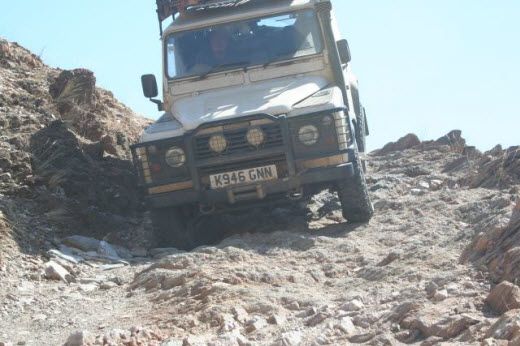|
|
Dangerous Roads Around The World
|
Old road surfaces, fences, and buildings may need to be removed before construction can begin. Trees in the road construction area may be marked for retention. These protected trees should not have the topsoil within the area of the tree's drip line removed and the area should be kept clear of construction material and equipment. Compensation or replacement may be required if a protected tree is damaged. Much of the vegetation may be mulched and put aside for use during reinstatement. The topsoil is usually stripped and stockpiled nearby for rehabilitation of newly constructed embankments along the road. Stumps and roots are removed and holes filled as required before the earthwork begins. Final rehabilitation after road construction is completed will include seeding, planting, watering and other activities to reinstate the area to be consistent with the untouched surrounding areas.
Processes during earthwork include excavation, removal of material to spoil, filling, compacting, construction and trimming. If rock or other unsuitable material is discovered it is removed, moisture content is managed and replaced with standard fill compacted to 90% relative compaction. Generally blasting of rock is discouraged in the road bed. When a depression must be filled to come up to the road grade the native bed is compacted after the topsoil has been removed. The fill is made by the "compacted layer method" where a layer of fill is spread then compacted to specifications, the process is repeated until the desired grade is reached.
General fill material should be free of organics, meet minimum California bearing ratio (CBR) results and have a low plasticity index. The lower fill generally comprises sand or a sand-rich mixture with fine gravel, which acts as an inhibitor to the growth of plants or other vegetable matter. The compacted fill also serves as lower-stratum drainage. Select second fill (sieved) should be composed of gravel, decomposed rock or broken rock below a specified Particle size and be free of large lumps of clay. Sand clay fill may also be used. The road bed must be "proof rolled" after each layer of fill is compacted. If a roller passes over an area without creating visible deformation or spring the section is deemed to comply.
The completed road way is finished by paving or left with a gravel or other natural surface. The type of road surface is dependent on economic factors and expected usage. Safety improvements like Traffic signs, Crash barriers, Raised pavement markers, and other forms of Road surface marking are installed.
|
|









